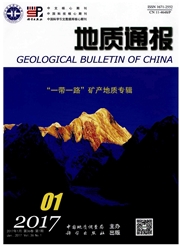

 中文摘要:
中文摘要:
在中国,当保护在多山的区域沿着道路对大量的落石,碎片流动和碎片雪崩组织,严肃挡土墙广泛地被使用。在这份报纸,分离元素方法(DEM ) 被用来在挡土墙上调查小粒的雪崩和碎片流动的影响。碎片作为通过摩擦滑动接触交往的二个维的圆形的磁盘被建模。控制粒子的变丑和运动的基本方程被介绍。一系列数字实验在影响一个挡土墙的一个理想化的碎片幻灯片上被进行。参量的学习被执行了在在墙上施加的影响力量上检验斜坡几何学,滑动的团的旅行距离,墙位置,和表面磨擦的影响。结果显示出那:1 ) 当斜坡角度等于 60 时,力量完成它的最大的价值 ?? 潢?
 英文摘要:
英文摘要:
In China, gravity retaining walls are widely used as protection structures against rockfalls, debris flows and debris avalanches along the roads in mountainous areas. In this paper, the Discrete Element Method (DEM) has been used to investigate the impact of granular avalanches and debris flows on retaining walls. The debris is modeled as two dimensional circular disks that interact through frictional sliding contacts. The basic equations that control the deformation and motion of the particles are introduced. A series of numerical experiments were conducted on an idealized debris slide impacting a retaining wall. The parametric study has been performed to examine the influences of slope geometry, travel distance of the sliding mass, wall position, and surface friction on the impact force exerted on the wall. Results show that: 1) the force achieves its maximum value when slope angle is equal to 60°, as it varies from 30° to 75°; 2) an approximate linear relationship between the impact force and the storage area length is determined.
 同期刊论文项目
同期刊论文项目
 同项目期刊论文
同项目期刊论文
 期刊信息
期刊信息
